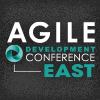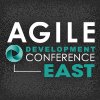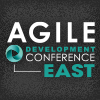 |
Distributed Scrum: Dangerous Waters-Be Prepared!
Slideshow
Even though team collocation is strongly recommended in agile methodologies, a distributed team is often required in the real world today. What is so important about collocating anyway? Can you overcome the challenges of a distributed Scrum team and still remain agile? What are the solutions? Brian Saylor tackles these important questions and more. While Brian realizes that implementing Scrum and agile practices in a distributed team is not easy, he found that it is possible if you understand the inherent problems and work hard-every day-to overcome them. Brian walks you through the reasons collocating is important for agile teams and the extra challenges distributed agile teams face. Then he dives into practical, real-world tools, tips, and techniques that organizations should research and consider before jumping into distributed waters-and don’t forget your life jacket.
|
Brian Saylor, Scripps Networks Interactive
|
 |
A Big Helping of DevOps with Career Advice on the Side
Slideshow
For decades-with the exception of agile-dev followers-the IT community has continued to build and protect its departmental silos. Project management, business analysis, development, testing, DB administration, and operations are just a few of the specializations that are carved out and institutionalized. Agile practices seek to eliminate the walls and empower people to deliver the highest value to the business. DevOps is the latest effort in this direction-bringing developers, testers, and operations together to replace their silos with a continuous collaboration pipeline. Paul Peissner introduces DevOps and explains how it is a key to transitioning from continuous integration (creating the finished software product immediately) to continuous delivery (making the product immediately available to users) and adding tremendous new business value.
|
Paul Peissner, CollabNet
|
 |
It's About Products Not Projects: Product and Portfolio Roadmaps If you are managing your portfolio using projects, and not products, you may be missing opportunities to deliver more business value to your organization. Product and portfolio roadmaps are a strategic tool that you can use to align business goals and value to product delivery plans. Ellen Gottesdiener explores the why's, what's, and how's of product roadmaps including the different types of product roadmaps, steps for building and sustaining product roadmaps, key planning inputs, who should be involved, and techniques for exploring and evaluating features along the roadmap. Roadmaps articulate how your products will achieve their vision, help uncover technology requirements, communicate to internal and external customers, and provide a sound foundation for planning. Learn how roadmaps can help you deliver the right products, address customer needs, and make tough choices that will deliver strategic value.
|
Ellen Gottesdiener, EBG Consulting, Inc.
|
 |
Scaling Agile at Dell: Real-life Problems - and Solutions
Slideshow
The transition from waterfall-based software development to an agile, iterative model carries with it well-known challenges and problems-entrenched cultures, skill gaps, and organizational change management. For a large, globally distributed software development organization, an entirely different set of practical challenges comes with scaling agile practices. Last year the Dell Enterprise Solutions Group applied agile practices to more than forty projects ranging from a collocated single team project to projects that consisted of fifteen Scrum teams located across the US and India. Geoff Meyer and Brian Plunkett explain how Dell mined these real-life projects for their empirical value and adapted their agile practices into a flexible planning model that addresses the project complexities of staffing, scale, interdependency, and waterfall intersection.
|
Geoffrey Meyer, Dell Inc. l Enterprise Product Group
|
 |
Transitioning to Kanban: From Theory to Practice
Slideshow
You're familiar with agile and, perhaps, practicing Scrum. Now you're curious about Kanban. Is it right for your project? How does Kanban differ from Scrum and other agile methodologies? From theory to practice, Gil Irizarry introduces Kanban principles and explains how Kanban's emphasis on modifying existing processes rather than upending them results in a smooth adoption. Instead of using time-boxed units of work, Kanban focuses on continuous workflow, allowing teams to incrementally improve and streamline product delivery. Explore how to move from Scrum to Kanban with new, practical techniques that can help your team quickly get better. Discover the use of cumulative flow diagrams, WIP (work-in-progress) limits, and classes of services. In a hands-on classroom exercise, you'll help create a value stream map, determine process efficiency, and experience techniques from the Kanban toolset.
|
Gil Irizarry, Yesmail
|
 |
Protection Poker: An Agile Security Game
Slideshow
Each time a new feature is added to a product, developers need to consider the security risk implications, find ways to securely implement the function, and develop tests to confirm that the risk is gone or significantly lowered. Laurie Williams shares a Wideband Delphi practice called Protection Poker she's employed as a collaborative, interactive, and informal agile structure for "misuse case" development and threat modeling. Laurie shares the case study results of a software development team at RedHat that used Protection Poker to identify security risks, find ways to mitigate those risks, and increase security knowledge throughout the team. In this session, Laurie leads an interactive Protection Poker exercise in which you and other participants analyze the security risk of sample new features and learn to collaboratively think like an attacker.
|
Laurie Williams, North Carolina State University
|
 |
Doing Agile in a Waterfall World? Without Breaking Your Neck
Slideshow
Although many of us want to use only agile practices, we often work alongside teams with strong waterfall traditions. If you’ve had trouble finding ways for your agile ideas to co-exist peacefully with traditional lifecycles, this session is for you. Jared Richardson describes key integration points between waterfall and agile teams, and demonstrates the best ways to work together-or to perform clean hand-offs, if necessary. He shows how to use adaptive planning while still providing accurate progress status to traditional PMO counterparts. Jared reviews popular agile practices and discusses how they best function in a hybrid environment. Together, you and Jared will build a common vocabulary, examine two project models-one traditional and one agile, and then combine them in a hybrid that keeps the best of both worlds.
|
Jared Richardson, RoleModel Software
|
 |
Disciplined Agile Delivery in IT: A Full Lifecycle Approach
Slideshow
The good news: Agile methods deliver superior results compared to traditional approaches. The bad news: For IT projects, mainstream agile methods-Scrum, Extreme Programming (XP), and Agile Modeling (AM)- provide only part of the overall solution. Agile IT projects require some time and effort for upfront planning at the start and activities for sophisticated deployment scenarios at the end. Additionally, most agile projects in large IT organizations cannot escape compliance with governance standards. Mark Lines describes and explores the realities of agile development in enterprise IT environments. Discover how IBM’s freely available Disciplined Agile Delivery (DAD) process framework combines common practices and strategies from mainstream agile methods to address the full delivery lifecycle-from project initiation to solution release into production.
|
Mark Lines, UPMentors
|
 |
Test Automation on Large Agile Projects: It's Not a Cakewalk Automating regression testing on large-scale agile projects with multiple independent Scrum teams is not a cake walk. Because there is no single "test team" that performs all the testing-each Scrum team develops and runs independent tests, gaps arise as different automation implementations spring up. One team adds a new function which breaks automated tests, setting back the progress of other teams. Scott Schnier reviews one organization's journey developing a "test community of practice" to coordinate test development and maintenance across Scrum teams. Scott shares the lessons they learned, particularly selecting tools compatible with other developer and tester needs. Learn how Scott extended the JUnit framework to support automated functional testing and how his teams keep the standard that a user story is not really done until all its tests are "green" in the continuous integration, regression test pipeline.
|
Scott Schnier, Agilex Technologies
|
 |
CMMI® to Agile: Options and Consequences
Slideshow
If you long for greater agility in your process-oriented or CMMI world, this session is for you. Paul McMahon shares how organizations can integrate agile approaches with CMMI and its key process area requirements. He discusses the advantages and disadvantages of different approaches taken by two organizations-one a CMMI Level 3 and the other a Level 5-to embrace agile principles and practices. To ensure your organization doesn't jeopardize its CMMI compliance with agile methods, Paul shares an approach that uses techniques such as asking key questions to focus objectives, pruning your processes, using the CMMI less formally, and keeping your "must dos" packaged separately from guidelines. He describes and discusses examples of each technique. Learn why the two organizations took different approaches, why one achieved its goals, and why the other fell short.
|
Paul McMahon, PEM Systems
|

